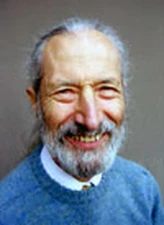Charles Raymond

The 2007 Louis Agassiz Medal is awarded to Charles Raymond for his contributions to the study of the motion of glaciers and ice sheets, combining rigorous field experiments with innovative theoretical analysis of physical processes.
Professor Charles Raymond’s major contributions to glaciology span more than 30 years and have advanced the quantitative understanding of glacier and ice-sheet flow. His research combines rigorous field experiments with innovative theoretical analysis of physical processes, focusing on important and challenging problems. His work on ice flow, observed by borehole deformation measurements, still stands as one of the most ambitious and successful field studies of the flow law. Raymond’s work on surging glaciers, with students and colleagues, comprised a decade-long field study of Variegated Glacier in Alaska, whose surge in 1982-83 resulted in a collection of outstanding data and publications that still form the central corpus of knowledge about surging and surge mechanisms. Raymond has been a pioneer in applying numerical (finite element) methods in glaciology. He recognized the best records of ice-sheet fluctuations are preserved in isochronal layers in slow-moving ridges of polar ice sheets, where complicated stress patterns require this approach. In a landmark publication in 1983, he pointed out that layers beneath a stable ice divide should be arched upward, important for interpreting ice cores, which are often extracted near divides. It took another 10 years before these so-called “Raymond bumps” were first observed. Subsequent innovative analysis of these arches has provided new insight allowing progress toward unraveling the flow history of the West Antarctic Ice sheet. The behaviour of the WAIS is strongly influenced by changing activity of fast flowing ice streams and so it was natural for Raymond to investigate and contribute significantly to elucidating the controls (mechanical and thermodynamical) of fast flow. Raymond’s work is innovative, with clarity of thought and exposition. On a wider front Raymond is committed to education, sharing his ideas among more than 20 graduate students, numerous post docs and colleagues with a generosity of time and spirit.
